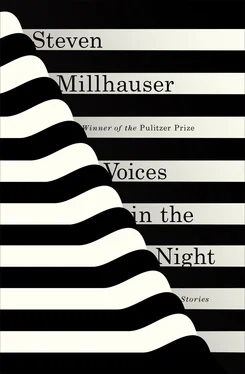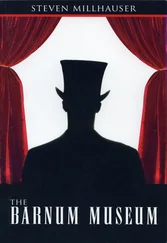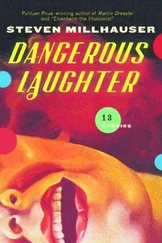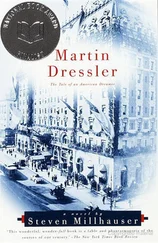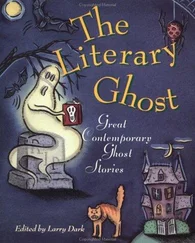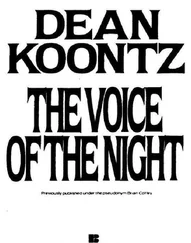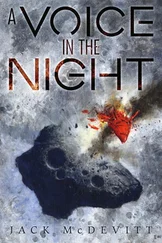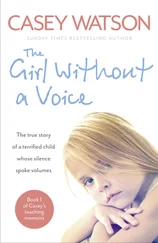Was there a turn, a change in the atmosphere? To single out a particular moment is to distort the record, for it suggests a clear history of cause and effect that can only betray our sense of what really happened. We can nevertheless agree that something began to reveal itself in March of this year, about six months ago. At that time three incidents occurred, apparently unrelated, which made a strong impression on the town without seeming to point in a direction. The first was the death by suicide of Richard and Suzanne Lowry, of 451 Greenwood Road. The Lowrys were in their early fifties, rich, healthy, happily married, with a wide circle of friends. They left no note. The police investigation uncovered no secret, no mistress or lover, no illness, no problem of any kind, and it was above all the absence of a motive that disturbed and finally angered a good many of us, who blamed the Lowrys not simply for throwing their lives away but for leaving us with an impenetrable mystery. There was some unpleasant talk among us that they did it in order to spite us, to show us that they needed no one and nothing. Although this explanation struck most of us as petty and malicious, we took it as a sign of the dissatisfaction we all felt, a testament to our irritable unforgiveness.
Two weeks later came the news of Carl Schneider, a seventy-four-year-old retired high-school geometry teacher who had been diagnosed with cancer of the liver. His death, by his own hand, attracted less attention than the Lowry deaths, though we were all aware of it and felt secretly thankful to Mr. Schneider for providing us with a reasonable suicide, some would say an admirable suicide, one that we could readily understand. In this sense the two incidents, which had nothing to do with each other, were connected in our minds. We also noted that in an interview in the Town Ledger , Schneider’s forty-six-year-old daughter said that her father had read about the Lowrys and had mentioned them during a visit. In a small town, someone remarked at the time, it’s difficult to kill yourself without word getting around.
Four days after the death of Carl Schneider, two high school juniors, Ryan Whittaker and Diane Grabowski, were discovered in the basement playroom of the Whittaker house, lying side by side on the daybed near the Ping-Pong table. The cause of death was bullet wounds to the head from two handguns, both owned by the boy’s father. A note was found, pinned to the young man’s polo shirt, written in his hand but signed by both teenagers and addressed to both sets of parents. In it they apologized for any distress their action might cause and stated that they died willingly by their own hand as a way of affirming their love and celebrating it forever in death. The note had a self-conscious, literary tone that we found exasperating and touching in equal measure, but what stuck in our throats was the fact that our town had experienced five suicides in less than a month.
It might have been left at that — a dark month, a run of bad luck — if it hadn’t been for an incident that took place in early April. George Sabol, a high school sophomore, and Nancy Martins, a ninth-grader, were found by police on a blanket in the woods behind the Sabol house. This time there was a single gun — a.38 Smith & Wesson semiautomatic — but the suicide note revealed that the plan was for Nancy Martins to fire the first shot, into her left temple, after which George Sabol would fire a shot into his own left temple. The note, printed from Sabol’s computer and signed in ink by both students, spoke of their undying love and the eternal bond of death. The written statement and the weapon made it evident that Sabol and Martins had patterned their deaths after the double suicide of Whittaker and Grabowski, and it was this unmistakable connection that first sent a ripple of alarm through our town. Fathers began to lock their guns away, mothers followed their sons and daughters anxiously from room to room; the high school expanded its counseling program and urged people to come forward with any information concerning unusual behavior. In the night we began to wake suddenly, our hands tense against the sheets.
Scarcely had we had a chance to absorb the deaths of George Sabol and Nancy Martins when we were confronted with another incident, more troubling still. The morning paper reported that three groups of high school students — two, two, and three — had been found dead, in three different homes; all three groups left suicide notes modeled on the ones we knew. It was also reported that five of the seven students belonged to the Black Rose, a secret association devoted to the cause of Meaningful Death. A stapled handbook, printed on purple Xerox paper, was discovered in the bedroom of one dead boy; from it we learned that members of the Black Rose were encouraged to give meaning to their lives by choosing their own death. Suicide was praised as a celebratory act, which transformed the drift and emptiness of ordinary life into the certainty of choice: to choose death was to impose a design on randomness. What disturbed us wasn’t so much the danger or incoherence of such ideas as their very existence. The next day two more deaths were reported, in different neighborhoods; a page torn from a handbook of the Black Rose was found in the pocketbook of one victim. It was now that we began to take the car keys away, to impose strict curfews, to keep our cell phones on at all times. In the houses of our town, unease drifted like smoke.
At this period we felt that if only we could put an end to the Black Rose, we could also put an end to the sickly fashion for death that had seized our sons and daughters. In this sense, though we hated and feared the Black Rose, we also clung to it, in a way were grateful to it, since it provided us with the hidden reason we desperately sought. Our teenagers were in the grip of a morbid philosophy — a decadent dogma — which had inspired a fatal game. We would fight a battle to win back the minds of our children, we would hurl ourselves against the forces of darkness with weapons of the sun. It was true that not every death could be traced to the Black Rose; there was even some evidence that membership was confined to a small circle of fanatics. But just as we felt we were getting to the heart of things, a new turn unsettled us — for it seemed that the Black Rose had already been left behind, while new seductions emerged with disquieting ease.
A passion for spectacular suicide now seized our sons and daughters. It was as if they had begun to vie with one another for the most memorable death. One group of six high school students, visiting a nearby amusement park, rode the roller coaster and were found dead at the end of the ride; all six had injected themselves on the way up the track with a solution of potassium chloride. None of the six was in any way connected with the Black Rose. Joanne Garavaglia, a popular girl with a passion for home video, went up to her attic one night and filmed herself as she raised a bone-handled hunting knife and plunged it into her throat. Lorraine Keating hanged herself at dusk from the branch of a hickory tree in front of a group of admiring friends. The fad for suicide notes had already been replaced by a taste for terse, obscure messages, such as “Never Enough” and “Evermore,” while the act of dying became an increasingly elaborate art, discussed and evaluated in high school hallways and behind the locked doors of bedrooms bathed in afternoon sunlight.
Young teenage girls were especially susceptible to the new trend for eye-catching death. It was seen as a way of drawing the right kind of attention to yourself, of making yourself stand out from the crowd. A popular girl, by means of a well-staged death, could become more popular still; an unpopular girl could break free from her isolation and loneliness in the short space of a single magnificent gesture. Jane Franklin was a quiet girl who walked the halls alone. On the night of the spring dance, she pulled on a pair of black jeans and a black hooded sweatshirt, climbed to the top of the water tower behind the chemical plant, and set herself on fire. Two days later Christine Jacobson, a blond cheerleader and co-captain of the girls’ swim team, walked to the front of her English class, raised a dark object slowly with both hands, and shot herself in the center of the forehead.
Читать дальше
